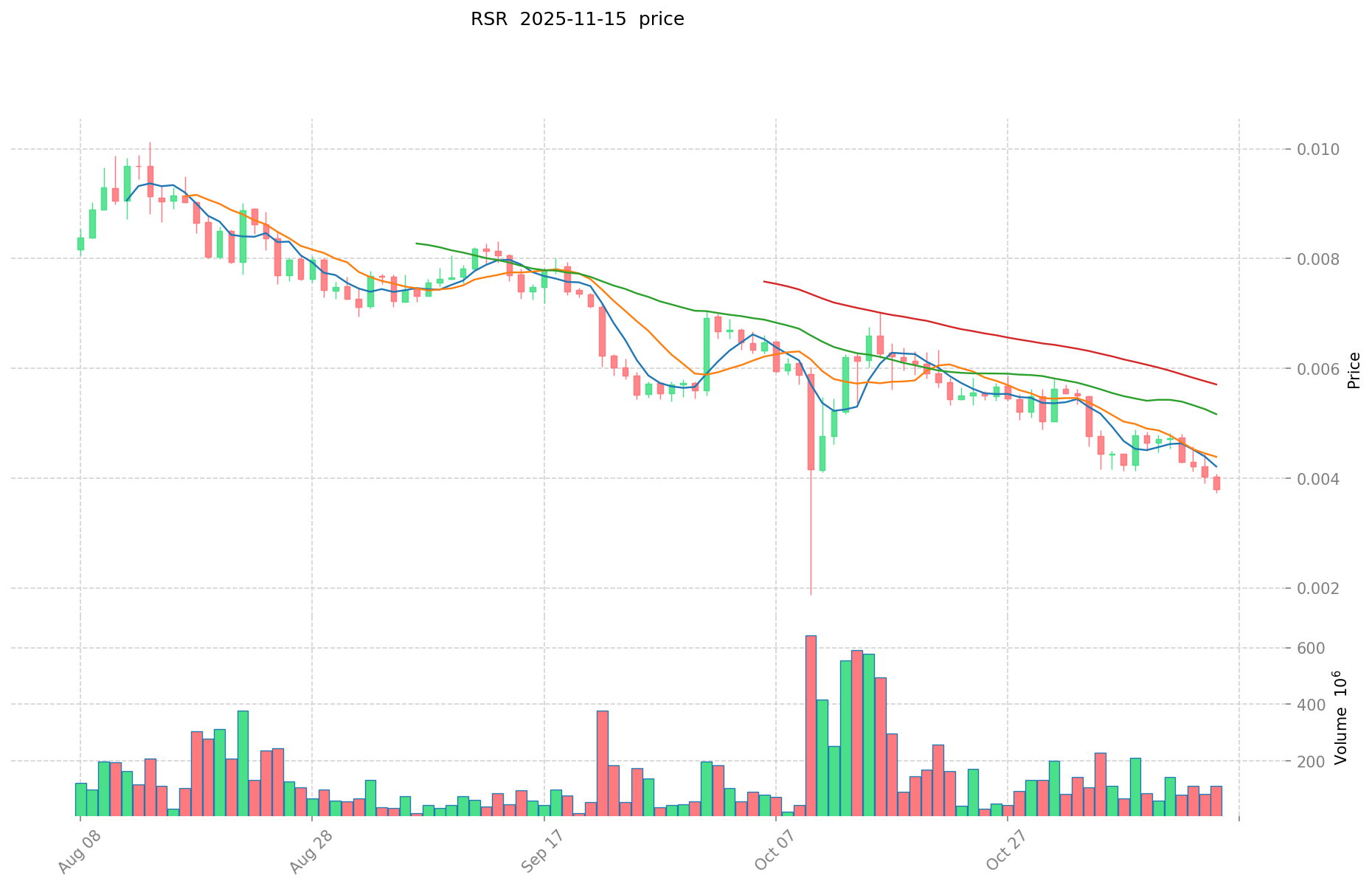What is RSR: Revolutionizing Radio Communication in the Digital Age
ReserveRights' Positioning and Significance
In 2019, Reserve launched ReserveRights (RSR), aiming to address financial instability and high inflation in vulnerable economies. As a stablecoin and digital payment system, ReserveRights plays a crucial role in the DeFi and global payments sectors.
As of 2025, ReserveRights has become a significant player in the stablecoin market, with a focus on regions with unreliable financial infrastructure. The project has gained support from influential investors in Silicon Valley and the digital asset space.
Origin and Development History
Birth Background
ReserveRights was created in 2019 to tackle financial instability and high inflation in vulnerable economies. It emerged during the blockchain technology boom, aiming to provide a stable, decentralized currency and payment system to change the status quo. ReserveRights' launch brought new possibilities for users in economically unstable regions.
Important Milestones
- 2019: Project launch, introducing the concept of a dual-token system with RSR and RSV.
- 2020: Main network launch, implementing the Reserve Protocol.
- 2021: Price reached an all-time high of $0.117424 on April 17.
- 2025: Continued development and expansion of use cases in targeted regions.
With support from prominent investors and the community, ReserveRights continues to optimize its technology, security, and real-world applications.
How Does ReserveRights Work?
Decentralized Control
ReserveRights operates on a decentralized network of computers (nodes) worldwide, free from control by banks or governments. These nodes collaborate to validate transactions, ensuring system transparency and attack resistance, empowering users with greater autonomy and enhancing network resilience.
Blockchain Core
ReserveRights' blockchain is a public, immutable digital ledger that records every transaction. Transactions are grouped into blocks and linked through cryptographic hashes, forming a secure chain. Anyone can view the records, establishing trust without intermediaries.
Ensuring Fairness
ReserveRights utilizes a consensus mechanism to validate transactions and prevent fraudulent activities like double-spending. Participants maintain network security through various activities and receive rewards in RSR tokens.
Secure Transactions
ReserveRights uses public-private key cryptography to protect transactions:
- Private keys (like secret passwords) are used to sign transactions
- Public keys (like account numbers) are used to verify ownership
This mechanism ensures fund security, with transactions remaining pseudonymous. The dual-token system of RSR and RSV (Reserve stablecoin) adds an extra layer of stability and functionality to the ecosystem.
RSR Market Performance
Circulation Overview
As of November 15, 2025, RSR has a circulating supply of 61,216,590,262 tokens, with a total supply of 100,000,000,000.
Price Fluctuations
RSR reached its all-time high of $0.117424 on April 17, 2021.
Its lowest price was $0.00121354, occurring on March 16, 2020.
These fluctuations reflect market sentiment, adoption trends, and external factors.
Click to view the current RSR market price

On-Chain Metrics
- Daily Trading Volume: $288,405.99 (indicating network activity)
- Active Addresses: 34,826 (reflecting user engagement)
ReserveRights Ecosystem Applications and Partnerships
Core Use Cases
ReserveRights' ecosystem supports various applications:
- Stablecoin: The Reserve protocol, providing a stable digital currency.
- DeFi: Reserve's stablecoin can be used in various DeFi applications for lending, borrowing, and yield farming.
Strategic Collaborations
ReserveRights has established partnerships with influential investors in Silicon Valley and the digital asset space, enhancing its market influence and technological capabilities. These partnerships provide a solid foundation for ReserveRights' ecosystem expansion.
Controversies and Challenges
ReserveRights faces the following challenges:
- Technical Challenges: Maintaining the stability of the Reserve token
- Regulatory Risks: Potential regulatory scrutiny of stablecoins
- Competitive Pressure: Competition from other stablecoin projects
These issues have sparked discussions within the community and market, driving continuous innovation for ReserveRights.
ReserveRights Community and Social Media Atmosphere
Fan Enthusiasm
ReserveRights' community is vibrant, with 34,826 holders as of November 15, 2025. On X platform, posts and hashtags related to ReserveRights often trend, particularly during price movements or new feature releases.
Social Media Sentiment
Sentiment on X shows a mix of opinions:
- Supporters praise ReserveRights for its stable currency solution and backing from prominent investors.
- Critics focus on potential risks associated with stablecoins and regulatory concerns.
Recent trends show cautious optimism amidst market volatility.
Hot Topics
X users actively discuss ReserveRights' role in combating inflation in developing economies and its potential to provide financial stability.
More Information Sources for ReserveRights
- Official Website: Visit Reserve's official website for features, use cases, and latest updates.
- X Updates: On X platform, Reserve uses @reserveprotocol, actively posting about technical updates, community events, and partnership news.
ReserveRights Future Roadmap
- Long-term Vision: Become a universal store of value, especially in regions with unreliable financial infrastructure and/or high inflation.
How to Participate in ReserveRights?
- Purchase Channels: Buy RSR on Gate.com
- Storage Solutions: Use Web3 wallets for secure storage
- Participate in Governance: Follow Reserve's official channels for governance participation opportunities
- Build the Ecosystem: Visit Reserve's GitHub to contribute to the project
Summary
ReserveRights is redefining digital currency through blockchain technology, offering stability and a potential solution for inflation-prone economies. Its active community, rich resources, and strong market performance make it stand out in the cryptocurrency field. Despite facing regulatory and technical challenges, ReserveRights' innovative spirit and clear roadmap secure its important position in the future of decentralized technology. Whether you're a newcomer or a seasoned player, ReserveRights is worth watching and participating in.
FAQ
What is the meaning of RSR?
RSR stands for Reserve Rights Token. It's the utility token of the Reserve Protocol, designed to maintain the stability of the Reserve stablecoin (RSV).
What is RSR in crypto?
RSR is the utility token of the Reserve Protocol, designed to stabilize the RSV stablecoin. It acts as collateral and governance token in the Reserve ecosystem.
What is RSR used for?
RSR is used to stabilize the Reserve protocol, provide governance voting rights, and earn rewards through staking in the Reserve Rights ecosystem.
What is RSR in trading?
RSR is the utility token of the Reserve Protocol, used for governance and to stabilize the Reserve stablecoin (RSV). It's traded on crypto exchanges and plays a key role in the Reserve ecosystem.
Share
Content